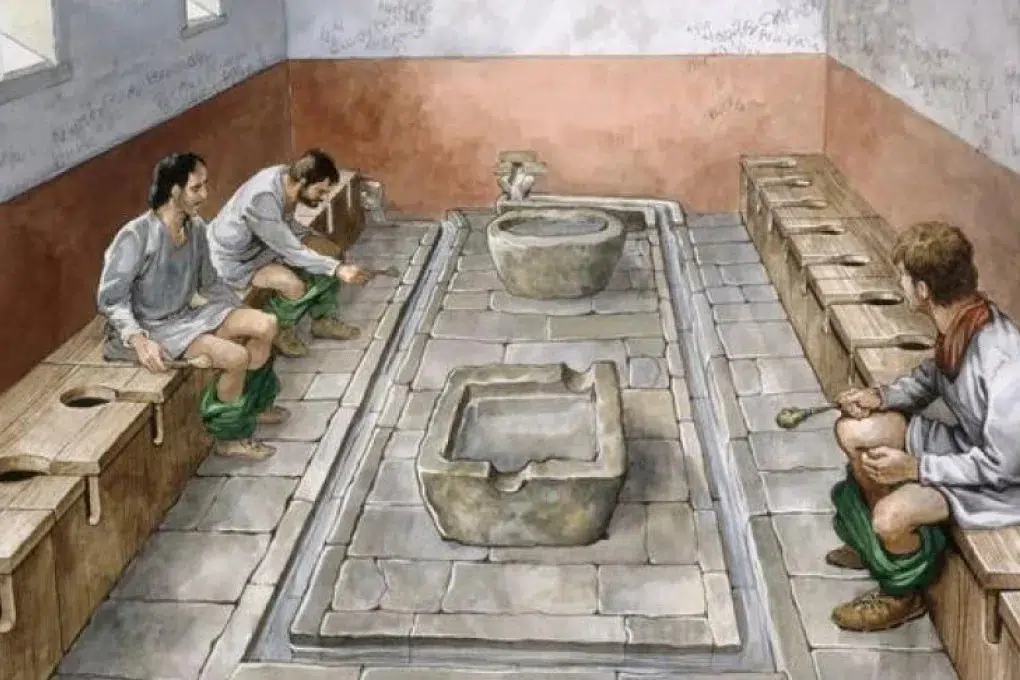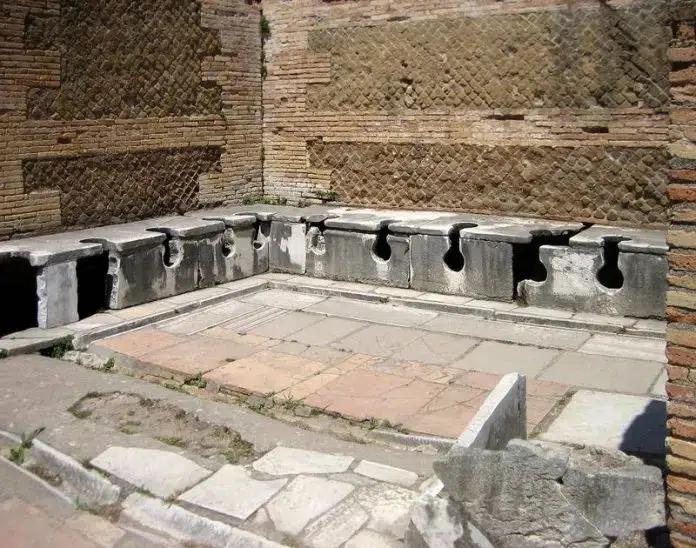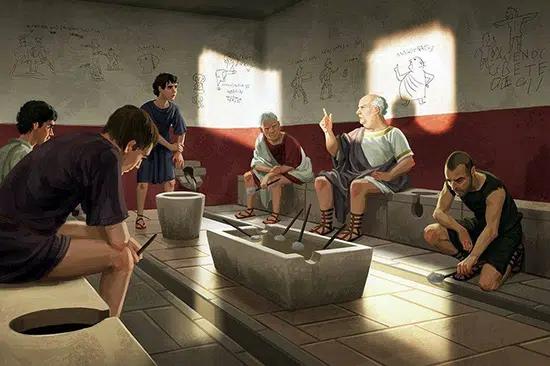The ancient Romans did toilet in public and reused their own urine and feces. Strange but true, for physiological needs the ancient Romans used public latrines (there were about 150 in Rome) and performed in front of other people, without the need for privacy. There is more: feces and urine were collected and constantly reused, […]
The Ancient Romans and Public Toilet
The ancient Romans did toilet in public and reused their own urine and feces. Strange but true, for physiological needs the ancient Romans used public latrines (there were about 150 in Rome) and performed in front of other people, without the need for privacy. There is more: feces and urine were collected and constantly reused, for several reasons. Find out which ones.
 Roman Latrin
Roman Latrin
The latrines were large functional and organized environments. The latrine was rectangular in shape, featured a series of perforated seats along two sides (today’s toilets) above a channel where water flowed. The excrement fell into the channel and was carried away by the current to the nearest sewer.
In the center of the latrine there was a channel with clean water in which you could dip a sponge mounted on a stick: after the ablution, the sponge was thrown into a special container where it was recovered by the servants, washed and prepared for reuse.

At home, the needs were done in containers which were then emptied into other larger containers, orcioni, in the condominiums which were periodically emptied by the workers in the processing and trade of fertilizers. Yes why
then faeces and urine used for cleaning, tanning the skins, as fertilizer and even as a cure for some diseases.
The urine was taken to the fullonicae (dry cleaners), where it was used to wash and whiten clothes. There were also those who threw waste and sewage on the street: a practice that was, in the act of crime, severely punished.
Urine is an extremely clean natural fertilizer as it does not normally contain bacterial load and has a low concentration of heavy metals.
Urea present in urine in ammonia: the Roman poet Catullus (54 BC) certainly knew the whitening power of urine that he used on his teeth, a practice he expressly talks about in one of his Carmina.
Ammonia in the urine was also used to whiten robes.
Urine also contains nitrogen and phosphorus, both of which are useful for growing plants. And Columella, a Roman writer expert in agriculture (4 – 70 AD), as reported in an article by Focus, tells how pee was particularly useful for the cultivation of pomegranates, to the point of making them juicier and tastier.

Columella also recommended the use of human urine also as veterinary therapy: care for sheep with biliary and lung problems, but also for sick bees.
Enjoy The Video !!!
In Roman times, urine was so precious that it was collected from public urinals and then sold. Also as mentioned to work the skins: a long soak in the urine seems to help remove the hair from the skin, which was then passed in animal feces so that the bacteria softened it, making it more valuable.

The faeces instead were used by the Romans to nourish the soil of their gardens.
Discover More about the Roman Bath
